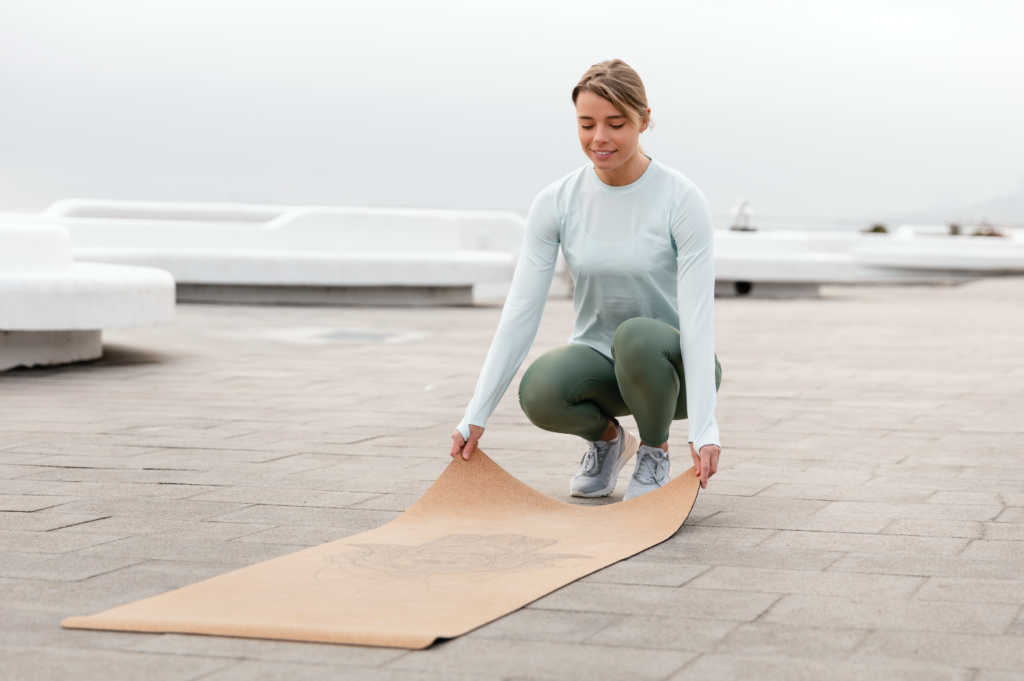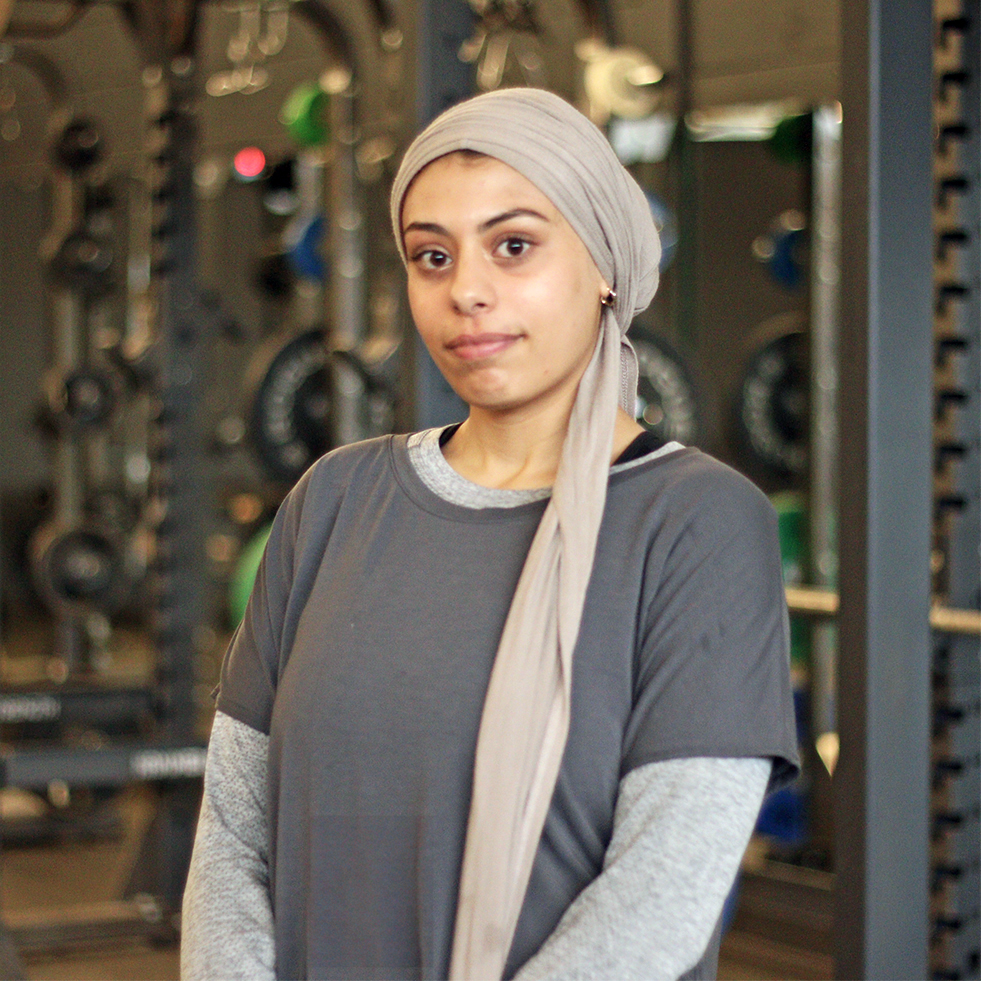Do you ever feel like your menstrual cycle takes over your life? Well, you’re not alone. Your cycle has significant impacts on your appetite, sleep patterns, mood and overall well-being, although in uniquely individualized ways for each person.
What is “Cycle Syncing”, and Should I Be Skeptical?
Cycle syncing is when you adapt your exercise and lifestyle habits to the different phases of your menstrual cycle. While the concept itself holds potential benefits, the way it’s marketed online can be misleading.
Research around cycle syncing is lacking, leading to an abundance of information that is not evidence-based. Some information online suggests following a universal approach to fitness and health guidelines during your menstrual cycle. But as we know, menstruation affects everyone in unique ways, so this approach leaves out a very crucial detail: each body is different, and each cycle is different. (McNulty et al., 2020). Everyone will experience different symptoms relative to the phases of their cycle, and sometimes each cycle can vary and influence an individual’s body in different ways.
The concept of cycle syncing comes from the sad reality that women (and people with periods) are historically left out of fitness and health conversations and research studies. Instead of ignoring the fluctuations in hormones which could affect activity level, let’s find a balance. This balance starts with paying attention to your body. Using evidence-based research, we can start working with your hormones, and not fighting them so you can be your happiest and healthiest self.

Menstrual Cycle Phases
The second is called muscular endurance training, which is the ability to engage in physical activity for a longer time. Exercising for an extended period increases the metabolic stress on your body, which, as we learned, leads to burning fat.
Estrogen
Estrogen is important for sexual and reproductive health. It also plays a key role in cholesterol and blood sugar levels, bone and muscle mass, circulation and blood flow, collagen production and brain function. Estrogen helps with your ability to focus, helps build muscle and fuel the body, especially during exercise.
Progesterone
Progesterone supports menstruation and pregnancy. It decreases insulin sensitivity which makes it harder for the body to take up glucose and use it for energy. Exercise can increase insulin sensitivity making it important for regulating the effect of hormones like progesterone.
To date there have been conflicting results of when you experience peak exercise performance during your cycle. In reality, there is no one-size-fits-all guideline for cycle syncing.
Focus On The Basics First
Your menstrual cycle might affect how well you exercise, but it’s not the biggest determining factor of your best performance. Let’s walk through the most important factors that can affect how well you perform when you work out.
Don’t Skip on Meals
Many athletes and fitness enthusiasts, especially women, often don’t eat enough nutrients. Most of the negative effects that impact exercise performance in response to the menstrual cycle occur in individuals who aren’t supporting their health with adequate nutrition. If you’re not getting the right nutrients, your period might stop which can negatively affect exercise performance. Eating enough food with enough micro and macronutrients will help your body perform better during workouts. Energy availability is key to optimal exercise performance and impacts the body more than the regular fluctuation of the menstrual cycle.
Prioritize Sleep, Stress Management + Hydration
Factors like sleep, stress regulation and hydration have more concrete evidence to show they not only effect exercise performance but also play a big role in regulating the menstrual cycle and reducing the fluctuation of symptoms and energy levels.

Get Your Zzz’s
The optimal number of hours of sleep can vary from person to person. Get familiar with the best hours of sleep for you and your body. Sleep is especially important for repairing muscle and restoring energy levels.
Keep Stress Low
Having high stress for too long can lead to chronic elevated levels of cortisol which ultimately reduces the body’s ability to recover and repair muscle. Find what relaxation techniques work for you, but some examples could include: meditation, breathwork, yoga and stretching.
Stay Hydrated
Research shows that dehydration can cause your body to perceive physical exertion as more intense than it is. (Deshayes, Pancrate & Goule, 2021). Dehydration can also negatively impact the levels of electrolytes and essential minerals in your body like magnesium, sodium, potassium, calcium and chloride. All these minerals are essential for your muscles to function properly. Remember to drink about half your weight in ounces to keep hydrated.
Follow a Well-Structured Program
Stick to a structured program and tune in to how your body responds. Consistency lets you gauge how factors like sleep, work, stress, and your menstrual cycle affect your workouts. Avoid frequent changes to your routine, as they can impede progress. Make sure your program includes gradual increases in intensity and is both manageable and easy to track.
Use RPE for Self-Regulation
RPE is the rate of perceived exertion. You can use it to help you gauge how you feel during your workouts.
Why? It can help give you awareness of what can be contributing to lower or higher performance. Write down when you have a harder time in your workouts and see if you can identify any patterns. When you notice patterns, you can adjust your workouts accordingly. For example, days when you have a higher RPE and lower energy levels, you can adjust your workouts with the following:
- Give yourself longer rest periods
- Add less weight to machines
- Do a lower volume of sets/reps
- Include longer warmups and cooldowns

Collect Data on Your Performance
This will be the last step in your process after prioritizing nutrition, sleep, stress, hydration and including a structured training program in your routine. It’s important to have a good baseline foundation before recording how you feel. When you start tracking progress keep note of the following:
- Look out for patterns throughout the month
- Keep a record of your cycle and changes in energy levels, mood, and hunger levels
If you identify recurring patterns adjust your training based on those things. During each cycle your body will experience different levels of energy. For instance, during the Menstrual phase (days 0-7) you may experience lower energy levels due to lower estrogen levels. In contrast, during the Follicular phase (days 8-13) you may feel more energetic due to a rise in estrogen. Listen to what your body is saying in each of the four phases of your period and adjust accordingly.
For example, if you tend to feel lower energy during the first few days of your menstrual phase you can plan heavier workout days either before or after.
Understanding your menstrual cycle and its impact on exercise performance can be empowering. While cycle syncing may have potential benefits, remember that you have a unique cycle, different from everyone. Listen to your body, prioritize nutrition, sleep, stress management and hydration, and adapt your routine accordingly to maintain balance throughout your cycle.

